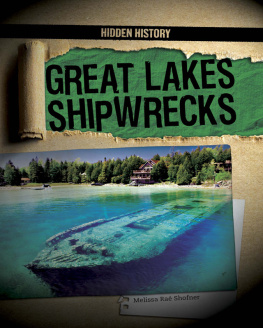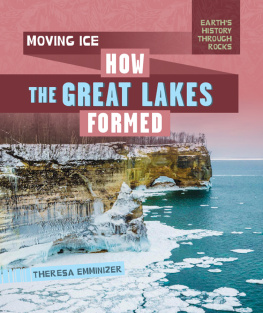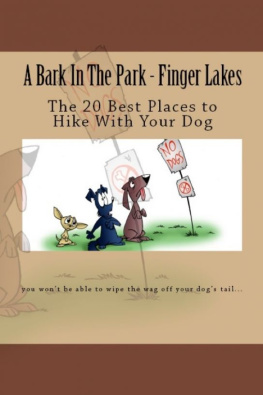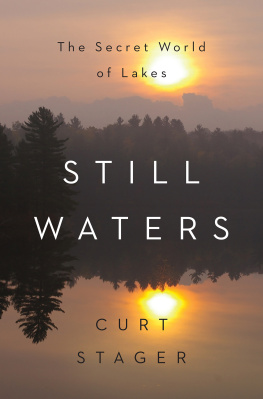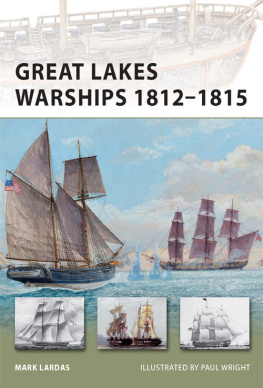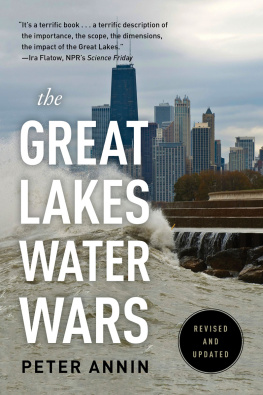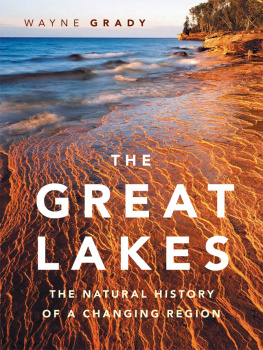
Praise for Meander
Meander is written in captivating personal prose by a mature activist, river scientist, and storyteller. Margaret Wooster stretches a diversity of disciplines ranging from planetary geology to hydromorphology, from federal and state policymaking to town hall deliberations, from the macroeconomics of water to the irreplaceable financial value of local open space and melds them all together into her irrefutable vision that rivers are a key pillar of community. The scope of her narrative centers in the value of the living rivers vitality to our own quality of life, health, and spirit. It is a scientific and historic love story. All who have worked on behalf of water will become immersed in Woosters dialogue with her own creeks, rivers, and lakes and find there validation for their own efforts. It is a thorough chronical of Great Lakes activism, policy, and issues (solved, festering, and emerging). It is a portal into the future of river protection and a welcoming must read for anyone who wishes to join the fray.
Elaine Marsh, Cofounder of
Friends of the Crooked River (the Cuyahoga)
Meander is both interesting and important. Wooster is uniquely qualified to write authoritatively about the historical land management of watersheds within Western New York; she has the requisite knowledge of history, policy, water quality, geomorphic processes, and the integrity of aquatic and riparian ecosystems. She also weaves anecdotal stories and experiences from her life in these environments that adds a personal and meaningful dimension to the narrative.
Sean J. Bennett. University at Buffalo
M EANDER
M EANDER
Making Room for Rivers
M ARGARET W OOSTER
Cover: Aerial photograph of Buffalo Creek and oxbow. Copyright June 10, 2017. Pictometry International Corp. All rights reserved.
Published by State University of New York Press, Albany
2021 State University of New York
All rights reserved
Printed in the United States of America
No part of this book may be used or reproduced in any manner whatsoever without written permission. No part of this book may be stored in a retrieval system or transmitted in any form or by any means including electronic, electrostatic, magnetic tape, mechanical, photocopying, recording, or otherwise without the prior permission in writing of the publisher.
Excelsior Editions is an imprint of State University of New York Press
For information, contact State University of New York Press, Albany, NY
www.sunypress.edu
Library of Congress Cataloging-in-Publication Data
Name: Wooster, Margaret, author.
Title: Meander : making room for rivers / Margaret Wooster.
Description: Albany : State University of New York Press, 2021. | Series: Excelsior editions | Includes bibliographical references and index.
Identifiers: LCCN 2020048188 | ISBN 9781438484679 (hardcover : alk. paper) | ISBN 9781438484686 (pbk. : alk. paper) | ISBN 9781438484693 (ebook)
Subjects: LCSH: Great Lakes Region (North America)Environmental conditions. | Stream healthGreat Lakes Region (North America) | Ecosystem healthGreat Lakes Region (North America)
Classification: LCC GE160.G75 W67 2021 | DDC 551.48/30977dc23
LC record available at https://lccn.loc.gov/2020048188
10 9 8 7 6 5 4 3 2 1
For NeilC ONTENTS
P ART 1
W ORDS FOR F LOWING W ATER
P ART 2
U NRAVELING
P ART 3
M EANDER ( AND O THER P ARTS OF S TREAM A NATOMY )
P ART 4
V ALUE C HANGE FOR S URVIVAL
I LLUSTRATIONS
A CKNOWLEDGMENTS
I first want to acknowledge the Haudenosaunee people, also known as Six Nations Iroquois, who continue to thrive on sovereign ancestral lands across New York State and southern Canada and who continue to help us rediscover our balance, respect, and oneness with the natural world.
I thank my parents, Gregory and Evelyn Wooster, from whose house on Victoria Avenue we five children explored an interesting Buffalo neighborhood that included a vast abandoned limestone quarry, my first experience of totally unmanaged landscape recovery. I am grateful to my fathers brother, Uncle Wheelock, for his farm in Getzville and his loving management of it: for the pond he dug and its muskrats; for his bees, guinea hens, and butternut trees; and for the red pine and spruce woodlot he planted that to me as a child looked like a full-grown forest.
Many thanks to colleagues who read drafts and provided valuable advice and editing, including Wayne Gall, Joshua Konovitz, Paul Fuhrmann, and Ray Vaughan; and to University at Buffalo faculty in geography, engineering, and architecture and planning, including Sean Bennett, Alan Rabideau, and Lynda Schneekloth. Thanks to Jean Dickson for editing and indexing help, to Phillip Campanile for enthusiasm when I most needed it, and to Carl Dennis, prestigious poet and the speaker you want at your side at public meetings. Thanks also to my family and fellow explorers, especially Neil Schmitz, Taylor Schmitz, Marieke Mur, Maureen Wall, and Tina Lewis.
I am grateful to the Town of West Seneca Conservation Commission and its chair, Evelyn Hicks, who has been a strong advocate over the past few decades for conserving the towns stream corridors, including Buffalo Creek; and to the National Fish and Wildlife Foundation which provided several years of funding to Buffalo Niagara Riverkeeper (now Waterkeeper) and to the town for oxbow work. Thanks also to the family of Robert and Bernadette Jacobs, who donated their oxbow land to the town to ensure its permanent conservation as a nature preserve, and to West Seneca firefighter and water rescuer David Willman, who agreed to be interviewed for this book.
Buffalo Niagara Waterkeeper supported and continues to support habitat restoration work in the Buffalo-Niagara region, including field surveys, master planning, water quality monitoring, and boots on the ground restoration projects. Thanks to Julie ONeill and Jill Jedlicka, Waterkeepers past and present executive directors, for their dedication to river conservation, and to Robbyn Drake, Katherine Winkler, Kerrie Gallo, Chris Murawski, Emily Root, and the rest of the staff for their ongoing interest in conserving stream corridors in western New York.
Many thanks to the Western New York Land Conservancy, on whose board I served for several years, for their expertise in developing and monitoring conservation easements and for conserving farmlands and forests along Buffalo Creek. I am deeply grateful also to the Nature Sanctuary Society of Western New York for their protection of several hundred acres of rare habitat, especially in the Cattaraugus Creek watershed.
I am indebted to videographer Anna Scime for her dedicated documentation of work and play, human and wild, at the oxbow and along the Buffalo Creek and River. Her film, Know Your Backyard, is a solid record of our project. Photographs of grain elevator diving in are from her film Everybody Lives Downstream.
Historic maps of Haudenosaunee territories and the Holland Land Company Purchase are courtesy of State University of New York at Fredonia Special Collections and Archives, Municipal Archives of Amsterdam, and Nederlandse Document Reproductie B.V. The cover photograph is reprinted with the permission of Pictometry International Corp. copyright June 10, 2017 Pictometry International Corp. All rights reserved.


